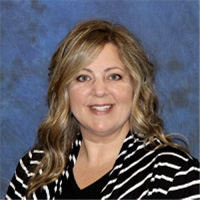Increasing Diversity in the NP Workforce
Find NP Schools
For the 2023-2024 academic year, we have 140 NP schools in our database and those that advertise with us are labeled “sponsor”. When you click on a sponsoring school or program, or fill out a form to request information from a sponsoring school, we may earn a commission. View our advertising disclosure for more details.
“The nurse practitioner role was created, in part, to increase access to care. Now we need a workforce that’s representative of the populations we serve. That’s the direction we’re heading.”
Billie Vance, PhD, Clinical Associate Professor, West Virginia University
Despite fostering an inclusive approach to care, the nursing workforce still needs to work on its own homogeneity. According to the 2020 National Nursing Workforce Survey, over 80 percent of nurses identified as white, and over 90 percent identified as female. While the survey found an increase in minority representation from 2017, the figures are still some of the most slanted of any profession.
The nation’s nurse practitioners (NPs) are taking steps to rectify the issue. Already, NPs provide a significant portion of healthcare services in America, especially in rural and underserved areas. They will be relied upon even further in the future. But a more diverse workforce is necessary to meet the care needs of an increasingly diverse population. Nursing students, nursing programs, NPs, and state legislatures can all play a part.
Read on to learn more about the state of NP workforce diversity and where it’s going.
Meet the Expert: Billie Sue Vance, PhD, MSN, APRN, FNP-BC, CNE

Dr. Billie Vance is a clinical associate professor and the director of MSN/DNP Program at West Virginia University. She also participates in the faculty-practice plan as an advanced practice nurse and cares for patients with substance use disorder. Dr. Vance earned both her MSN and her PhD from West Virginia University.
Dr. Vance’s research interests include the care of veterans and patients with substance use disorder, and methods of improving education for nurse practitioner students.
She has co-authored research published in the Journal of Advanced Nursing, the Journal of Clinical Nursing, Nurse Educator, Nurse Forum, and Policy, Politics, and Nursing Practice. Dr. Vance was awarded the WVU PhD Nursing Alumni Award for Leadership in 2021.
The Importance of Healthcare Provider Diversity
“Increasing the diversity of providers can make patients more comfortable in seeking out care,” Dr. Vance says. “People want care from someone who understands them.”
Studies suggest that people of color tend to prefer providers who share their race or ethnicity (JAMA 2020). When patients trust their provider understands them, they’re more likely to schedule checkups, adhere to prescription medications, and disclose information more fully and honestly. But when there’s a nationwide primary care shortage, finding a primary care provider is hard enough; finding a provider who matches your background might not even be possible.
“It’s starting to get more diverse,” Dr. Vance says. “We’re certainly recruiting more men into our NP and undergraduate programs, and our ethnic diversity is comparable to the population within our state. But with regard to true diversity, we still have a long way to go.”
Representation isn’t simply a moral aspiration; it has measurable, objective effects. Racial and ethnic biases, conscious or unconscious, can affect healthcare delivery and contribute to existing health disparities. Black women are three times more likely to die from a pregnancy-related cause than white women (CDC 2023). While multiple factors contribute to that disparity, research suggests that provider bias is one of them, and greater provider diversity could help.
How to Increase Provider Diversity
“To get more diverse people into the nursing workforce, first you have to get them into nursing school,” Dr. Vance says. “That means recruiting from a diverse pool of applicants. But there are so many barriers that exist.”
Representation is also an issue within nursing schools, which would benefit from more diverse faculty and more diverse leadership. But nursing schools could also do more to reach out into secondary education and address students who may have never identified nursing as a potential career. By nourishing this early stage of the school-to-workforce pipeline, nursing schools can provide personal support and education around the admissions process and financial aid.
“Once you get more diverse students in, then you have to be able to retain them,” Dr. Vance says. “You need support groups, mentorships, and success plans. You need to take a holistic approach. Even if you aren’t able to recruit a diverse faculty, you can still create a culture at your university in which everybody feels a sense of belonging.”
The WVU School of Nursing has established a Diversity, Equity and Inclusion (DEI) committee to improve the recruitment and retention of diverse student populations, as well as review and improve curricula related to DEI. The WVU School of Nursing also works collaboratively with the WVU Health Sciences Center and other health professions to support DEI efforts across campus.
The curricula of today’s NP programs are starting to incorporate more diverse case scenarios, ones that feature culturally-specific details. A modern NP workforce needs to be sensitive to the particularities that a diversity of patients can bring—from race and ethnicity, to language and spirituality, to sexuality and gender, to everything in between—and how those particularities can affect a patient’s health and care experience.
“We still have a predominantly white and female student body,” Dr. Vance says. “But we’re also trying to do things to prepare students to take care of more culturally diverse patients. So much of this is about being in tune with your patient, getting to know them, and advocating for the best care. It’s a holistic approach. It’s what nurses do.”
The Future of the NP Workforce
NPs are an essential component of America’s healthcare workforce. Already, they provide a significant portion of care in rural and underserved communities. In the future, they’ll be relied upon even further. More than half the states in the country have enacted full practice authority, which allows NPs to practice to the full scope of their education and training. As more states follow suit, NPs and their patients will benefit. Preliminary research suggests that full practice authority could help increase the NP workforce’s diversity.
“Full practice authority reduces barriers by enabling NPs to practice within and to their full scope of practice,” Dr. Vance says. “It increases the number of providers who can provide care. And when you’re talking about access to care for diversified populations, it really comes down to numbers.”
In 2021, the American Association of Colleges of Nursing (AACN) released its new core competencies for nursing education. They include a strong focus on the social determinants of health and the need to care for a diverse population. The new competencies push for not only an increase in the diversity of providers but also for the providers already in practice to pay more attention to ways to reduce systemic racism within healthcare facilities.
NPs are known for their holistic approach to care. That approach is now being turned inward and used to both diagnose bias and prescribe changes that can lead to healthier outcomes. The role itself is evolving and will continue to.
“The nurse practitioner role was created, in part, to increase access to care,” Dr. Vance says. “Now we need a workforce that’s representative of the populations we serve. That’s the direction we’re heading.”

Matt Zbrog
WriterMatt Zbrog is a writer and researcher from Southern California, and he believes nurse practitioners (NP) are an indispensable component of America’s current and future healthcare workforce. Since 2018, he’s written extensively about the work and advocacy of NPs, with a particular focus on the rapid growth of specialization programs, residencies, fellowships, and professional organizations. As part of an ongoing series on state practice authority, he’s worked with NP leaders, educators, and advocates from across the country to elevate policy discussions that empower NPs. His articles have featured interviews with the leadership of the American Association of Nurse Practitioners (AANP), the National Association of Pediatric Nurse Practitioners (NAPNAP), and many other professional nursing associations.